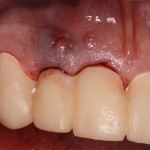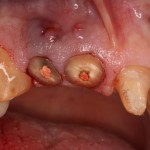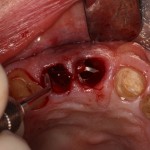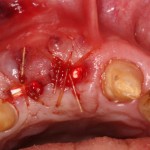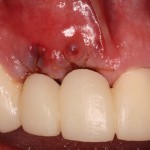Before Dental Implants Can Be Placed
The use of dental implants in patients with deficient jawbones creates a new demand for bone reconstruction before or during implant therapy. This is especially true when natural esthetics is required. The most critical aspect of creating an implant restoration is the surgical placement of dental implants in a “prosthetically driven” position to restore the natural position and to emulate the natural emergence of a tooth from the soft tissues. Periodontal bone loss, tooth extraction, and long-term use of removable appliances typically result in advanced alveolar bone loss that prevents the placement of dental implants in an optimal prosthetic position. Studies with histology have demonstrated that bone regeneration in membrane-protected defects healed in a sequence of steps that simulated bone formation after tooth extractions. They found that after blood clot formation, bone regeneration was initiated by the formation of woven bone initially along new blood vasculature at the periphery of the defect. Barrier membranes are biologically inert materials that serve to protect the blood clot and prevent soft tissue cells (epithelium and connective tissue) from migrating into the bone defect, allowing osteogenic cells to be established. Bone graft materials have been used to facilitate bone formation within a given space by occupying that space and allowing the subsequent bone growth to take place.
If you are interested in how dental implants can change your life,
Check out our Dental Implants Page.
Current Case Presentation
The current patient patient was referred by his general dentist due to root fractures on previous root canal treated teeth with acute infection. Due to the location of the teeth and esthetic concerns, the general dentist sectioned the teeth at the gum line and fabricated a temporary fixed partial bridge. The patient presented the next day and I removed the temporary bridge and surgically extracted the teeth. All inflammatory tissue was excised and Decalcified, Freeze-dried Bone Allograft was utilized as a space maintainer. A bilayer membrane (resorb / non resorb) technique was utilized to cover the bone graft. Subsequent dental implant placement will be completed in approximately 6 months post healing.
I truly enjoy specializing in superior dental materials and cutting edge techniques in order treat my patients with the best possible care.
- Hopeless teeth with inflammation
- 2 hopeless teeth due to root fractures
- Completed extractions
- Completed extractions and bone graft
- Final surgical pic





 by
by 

